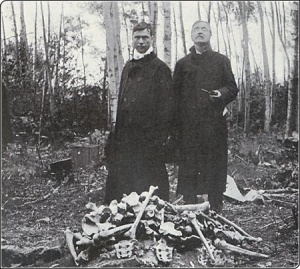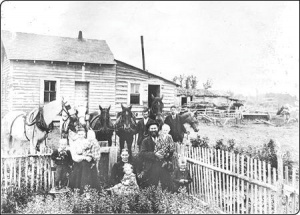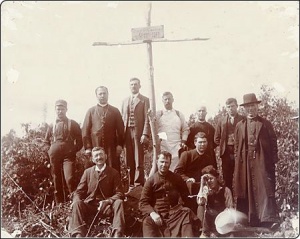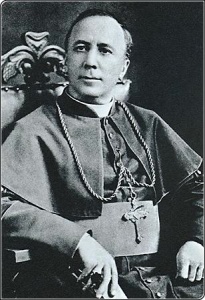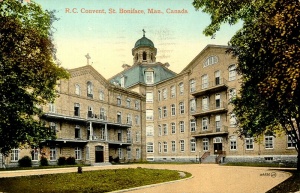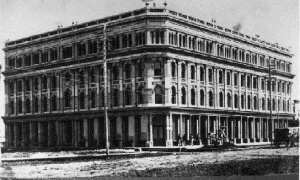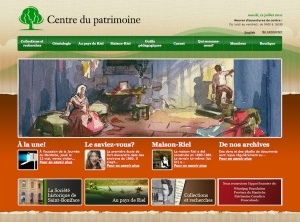Société historique de Saint-Boniface and Franco-Manitoban Heritage
par Fournier, Martin and Girard, David
The Société historique de Saint-Boniface was founded amidst considerable enthusiasm in 1902 when Monsignor Langevin, bishop of the Diocese of Saint Boniface, along with some ten companions, discovered what he believed to be the remains of Fort Saint-Charles, which had been built by the explorer Pierre Gauthier de la Vérendrye. The initial goal of the Société was to demonstrate the importance and long history of the French presence in the West by conducting archeological and historical research. The Société quickly became a centre of Franco-Manitoban intellectual life. It collected artifacts, compiled archives and published history books and pamphlets. Later it also became involved in protecting threatened francophone and Métis heritage. Beginning in the 1970s, a renewed period of intense activity led to the creation of the Centre du patrimoine (Heritage Centre), which now houses Manitoba’s francophone and Métis archives. In many respects, the Société historique de Saint-Boniface has played a critical role in promoting and preserving Franco-Manitoban heritage.
An Ongoing Commitment to Franco-Manitoban Heritage
Today the Société historique de Saint-Boniface is best known for its Centre du patrimoine. This ultramodern, specialized building is home to most of Manitoba’s francophone and Métis archives, as well as holdings from the rest of Western Canada. The Centre is now the living memory of these communities. Old books, episcopal archives, photographs, notarial and genealogical data, tape recorded radio broadcasts, films, architectural drawings and paintings are all under the supervision of professional archivists. The Centre also houses a documentation centre specialized in the history and heritage of francophone and Métis communities, as well as training and event facilities.
The Centre is the product of the Society’s decision to specialize in archiving in the 1970s and 80s. But the Society also put together many of the collections housed at the Musée de Saint-Boniface, especially those related to Louis Riel. It has sponsored numerous studies and research publications about Manitoban pioneers, the main francophone parishes and the Métis communities, in addition to mobilizing the community to protect francophone heritage and identity in Manitoba. Today the Society is responsible for preserving this heritage and making it accessible to the broader community by digitizing and publishing numerous documents online.
It All Started with a Productive Boat Trip...
At the turn of the 20th century, tensions between the anglophone majority and the francophone minority were high in Manitoba. The French language no longer had a place in government and its teaching in schools was restricted (NOTE 1). Francophone clergy and members of the educated elite from Collège de Saint-Boniface and similar schools in Québec were determined to demonstrate the value of francophone contributions to the province’s development. In the parlance of the time, they wanted to prove the founding role played by the French-Canadian “race” in the march of civilization west of the Canadian Great Lakes. To this end, Msgr. Adélard Langevin, bishop of the Diocese of Saint-Boniface, set out with a team of about ten men in search of the fort that had served as home base to Pierre Gauthier de La Vérendrye during his exploration of the West. Langevin’s team followed in the footsteps of the Jesuits who had led a previous unsuccessful search for the remains of Father Jean-Pierre Aulneau, a priest killed in a Sioux ambush of La Vérendrye’s party in 1736 along with one of Pierre La Vérendrye’s sons, Jean-Baptiste. On September 4, 1902, the members of the small expedition found what they thought to be the exact location of Fort Saint-Charles in a bay on Lac des Bois. That very evening the Société historique de Saint-Boniface was established on the expedition’s boat.
This discovery, which was soon disproven when the actual location of Fort Saint-Charles was discovered (NOTE 2), was nevertheless the impetus for a series of archeological and documentary research projects that would guide these amateur archeologists and provide valuable information about the nature and scope of their discoveries. For a dozen years, this research into the La Vérendryes’ expeditions and network of forts was the sole focus of the Society’s members. They also gathered the first collections of artifacts, had French archives transcribed true to their originals, including geographical maps, and published research findings, primarily in the Bulletin de la Société historique de Saint-Boniface, from 1911 to 1915.
The death of Msgr. Langevin in 1915 prompted important changes in the direction of the Society. Judge Louis-Arthur Prud’homme, who had been secretary of the Society since its founding, became president. Observing that great strides had been made in the archeological investigations, he deemed it was time for his members to deepen their understanding of the Métis. The Society would take particular interest in oral sources, an innovative approach at the time, since several witnesses to the events surrounding the life and death of Louis Riel were still alive. Judge Prud’homme himself conducted a number of surveys and studies retracing the history of the Métis people, most of which were published in La Revue canadienne and the Transactions and Proceedings of the Royal Society of Canada. Interviews were also conducted with people who had had ties of any kind with the Lagimodière family, the first French-Canadian couple to settle in the Red River Colony after the conquest of New France by the British. Subsequently, however, the Society gradually became less active, primarily because it rarely set new goals or replaced its aging members.
The Resurgence of the Société historique de Saint-Boniface (1933–1968)
When Father Antoine Deschambault became president in 1933, he had to track down the living members of the Society in hopes they would pass on their knowledge and commitment to new members. He soon put forth the idea of creating Saint-Boniface’s first museum to exhibit the growing collection of artifacts amassed by the Society’s members, a project that was realized in 1938 during the bicentennial celebrations of La Vérendrye’s arrival at La Fourche (Winnipeg). Deschambault also gave the Society a new direction by turning to local history and publishing several parish monographs beginning in 1940. Many archival documents were collected as a result of these efforts. Along the way, the Society expanded its sphere of action while pursuing the oral history project it had been promoting through Les Cloches de Saint-Boniface, the magazine of the Diocese of Saint-Boniface. Unfortunately, of the many interviews conducted with community elders, some of which were recorded on vinyl (NOTE 3), only those that were radio broadcast in 1946–1947 were kept. They centred on the history of the francophone parishes and key parish figures and events.
In the 1950s, Society members became increasingly aware of the heritage value of certain old buildings in the community. They were at the forefront of the effort to save the Grey Nuns’ Convent, which came under threat of demolition after the Nuns moved from the Old Convent to their new home just south of it in 1956. The Society hoped to convert the building into a museum, but after several rounds of negotiations with the city of Saint-Boniface they turned the project over to the city in the 1960s.
Antoine Deschambault died in 1960 after serving at the helm of the Society since 1933. In the years that followed, the Society went through a number of presidents, a sign of new energy and debate over the organization’s direction. At the time, Father Antoine Champagne was compiling sizable archives on the La Vérendrye family by acquiring copies of documents, primarily from France and Québec. There was also growing interest in genealogy, and the Society was acquiring archives that were useful for genealogical research. Father Pierre Picton in particular was especially interested in the Métis. The Société also acquired archives from francophone institutions and organizations across the Prairies. But the fire at the Saint-Boniface Cathedral in 1968, which destroyed part of the library and archives that the Society kept in the building’s basement and in a room in Saint-Boniface City Hall, sounded alarm bells.
New Blood and Professionalism (1968–1987)
The fire was a blow to the Société historique de Saint-Boniface, which had become increasingly focused on archives and written documentation. Its members quickly realized the importance of having a dedicated facility specifically designed to preserve archives in a reliable and professional manner. In 1970, the Society marked a significant change of course by naming a professional—Franco-Manitoban historian Lionel Dorge—as president for the first time in its history. Though his term in office was short, it was under his watch that the Bulletin de la Société historique de Saint-Boniface was revived in June 1971 (NOTE 4). Dorge continued working with the Society, notably as part-time director, helping it put together various exhibits and conduct historical research and authoring a major work entitled Introduction à l’étude des Franco-Manitobains in 1973. That year, the Society moved to larger, more functional premises at the Collège universitaire de Saint-Boniface.
The Society increasingly transformed itself into a professional organization with more and more lay members as it took up the social causes of the day. The transition became increasingly evident in the late 1970s when many young people joined and became involved in the organization. This newfound energy to promote and preserve Franco-Manitoban and Métis heritage went hand in hand with an increase in the Society’s funding, and marked the debut of an extremely active period in its history. The Society was entrusted with managing Riel House National Historic Site of Canada in Saint-Vital in suburban Winnipeg in 1979. Enhanced financial resources also enabled it to undertake large-scale projects, like acquiring as many archives as possible from francophone and Métis lay and religious organizations and institutions, not just in Saint-Boniface but all over Manitoba. These efforts lasted until the late 1990s, and the new building carried this energy into the 2010s.
In the meantime, both the Musée de Saint-Boniface and the Society clarified the focus of their missions; most heritage items were transferred to the museum while the Society turned its attention primarily to preserving and presenting archival documents. The organization also pursued its publishing activities with the creation of the occasional series Les Cahiers d’histoire de la Société historique de Saint-Boniface, published by Éditions du Blé beginning in 1980 (NOTE 5). Finally, the Society took another step toward professionalization in 1981 by appointing a full-time director. In 1985, the Society again expanded its space at Collège universitaire de Saint-Boniface.
Creation of the Centre du patrimoine and the Society’s Future
The expansion was only a temporary measure, however, because in 1987 the Society launched its biggest project ever–the construction of heritage centre with all the space and equipment needed for it to fulfill its mission. This ambitious project would require lengthy preparations, including negotiations with partner organizations such as the Diocese of Saint-Boniface, religious communities and Radio-Canada Manitoba, to determine the quantity of archival documents to be housed at the Centre, and thus the size of the facilities and the amount of funding needed. The project would assemble the vast majority of Manitoba’s francophone and Métis documents at a single site—the Société historique de Saint-Boniface archive centre—making it the French-language equivalent of the predominantly English-language Provincial Archives of Manitoba.
Construction of the Centre du patrimoine began in 1997, and the Society moved in in April 1998 to the delight of Manitoban francophones and Métis. The Centre boasts ultramodern facilities, cutting edge archival preservation technologies and specially-designed research and event spaces. With these new facilities, the Société historique de Saint-Boniface can pursue its central role in the preservation of francophone and Métis culture and heritage in Manitoba and Western Canada.
Today the Centre is focused on the future and makes increasing use of new information and communication technologies, demonstrating the vitality of Franco-Manitoban communities rooted in a rich heritage many generations old. This heritage is very visible at the entrance to the Centre’s reception and documentation room, which incorporates a section of the façade of the Empire Hotel. The hotel was built in the 19th century by Québec-born businessman Joseph Cauchon, who would later become lieutenant governor of Manitoba and refuse to sign the document abolishing French as an official provincial language in 1879. The hotel, which was of particular significance for Winnipeg’s francophone community, was demolished in the 1980s despite opposition from the Société historique de Saint-Boniface. But its metal façade was removed and preserved, and then integrated into the interior architecture of the Centre. It is a reminder to today’s visitors and users that Franco-Manitobans are a persistent people capable of overcoming obstacles and implementing major projects with an eye to the future.
Martin
Fournier, PhD
Historian
David Girard
Historian
Notes
1. French–English, German–English, Polish–English and other bilingual schools were created following the Laurier–Greenway Compromise after denominational schools were abolished. But tensions were heightened because French Canadians did not appreciate being put in the same category as the many ethnic groups from Europe settling in Western Canada at that time.
2. After several expeditions, the actual location of Fort Saint-Charles was finally found in July 1908 along with the remains of the twenty-one people killed in the Sioux ambush on Île au Massacre. Unfortunately almost all the remains and relics from Fort Saint-Charles were lost during the Collège de Saint-Boniface fire in 1922.
3. In 1941 a Society circular distributed by Father Deschambault urged members to document oral traditions, “even if you have to pay the scribe whom you are free to choose.” He also encouraged the collection of songs and legends, adding, “Could we get them to agree to record their songs and legends on records?” Les Cloches de Saint-Boniface vol. XL, no. 4, April 1941: p.102-104.
4. Forty years later, it is still being published.
5. Works appear occasionally in the Cahiers d’histoire de la Société historique de Saint-Boniface collection. The three most recent publications date from 1980, 2002 and 2007.
Bibliography
Campeau, Lucien, « Aulneau (de La Touche), Jean-Pierre », Dictionnaire biographique du Canada en ligne, site consulté le 21/01/11 [En ligne],http://www.biographi.ca/009004-119.01-f.php?&id_nbr=619.
Champagne, Antoine, « Gaultier de La Vérendrye, Jean-Baptiste », Dictionnaire biographique du Canada en ligne, site consulté le 26/04/11 [En ligne],http://www.biographi.ca/009004-119.01-f.php?&id_nbr=798.
Champagne, Antoine, « Gaultier de La Vérendrye, de Boumois, Pierre », Dictionnaire biographie du Canada en ligne, site consulté le 21/01/11,http://www.biographi.ca/009004-119.01-f.php?&id_nbr=1364.
Culture, patrimoine et tourisme Manitoba, « Site provincial du Manitoba no 8 », Gouvernement du Manitoba, site consulté le 19/05/11 [En ligne], http://www.gov.mb.ca/chc/hrb/prov/p008.fr.html
Fournier, Martin, 17 novembre 2010, Entrevue avec Gilles Lesage, président du Centre historique de Saint-Boniface, Winnipeg, Support numérique.
Société historique de Saint-Boniface, « La fondation de la Société historique de Saint-Boniface », Centre du Patrimoine, site consulté le 26/04/11 [En ligne],http://shsb.mb.ca/node/384.
Société historique de Saint-Boniface, « Chronologie de la société historique de Saint-Boniface », Centre du Patrimoine, site consulté le 26/04/11 [En ligne],http://shsb.mb.ca/SHSB.
Stanley, George F. G., « Gaboury, Marie-Anne (Lagemodière) », Dictionnaire biographique du Canada en ligne, site consulté le 21/01/11 [En ligne],http://www.biographi.ca/009004-119.01-f.php?&id_nbr=4992.
Verrette, Michel, « Saint-Boniface : une ville et ses institutions », dans André Fauchon (dir.) et Carol J. Harvey (dir.), Saint-Boniface 1908-2008 : reflets d’une ville, Winnipeg, Presse universitaire de Saint-Boniface, 2008, p. 23-30.
Additional DocumentsSome documents require an additional plugin to be consulted
Images
-
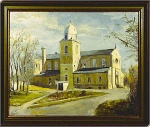 « Église du Monastère
« Église du Monastère
des Trappistes... -
 Arthur Béliveau, secr
Arthur Béliveau, secr
étaire de Mgr L... -
 Bloc Cauchon - Hôtel
Bloc Cauchon - Hôtel
Empire, qui fu... -
 Carte ancienne de Bat
Carte ancienne de Bat
oche, Manitoba
-
 Carte de l’expéditio
Carte de l’expéditio
n organisée pa... -
 Carte postale de Sain
Carte postale de Sain
t-Boniface, au ... -
 Carte postale montran
Carte postale montran
t l'intérieur d... -
 Carte postale montran
Carte postale montran
t la Cathédrale...
-
 Carte postale montran
Carte postale montran
t la Cathédrale... -
 Carte postale montran
Carte postale montran
t la Cathédrale... -
 Carte postale montran
Carte postale montran
t la Cathédrale... -
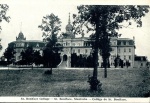 Carte postale montran
Carte postale montran
t la Collège de...
-
 Carte postale montran
Carte postale montran
t la Collège de... -
 Carte postale montran
Carte postale montran
t la grotte de ... -
 Carte postale montran
Carte postale montran
t la tombe de R... -
 Carte postale montran
Carte postale montran
t le couvent de...
-
 Carte postale montran
Carte postale montran
t le Petit Sémi... -
 Carte postale montran
Carte postale montran
t les deux cath... -
 Carte postale présent
Carte postale présent
ant le Musée de... -
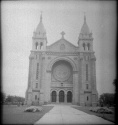 Cathédrale de Saint-
Cathédrale de Saint-
Boniface, Manit...
-
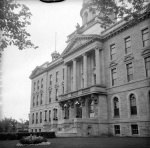 Collège des Jésuite
Collège des Jésuite
s à Saint-Boni... -
 Croix érigée sur un
Croix érigée sur un
terrain éleve... -
 Fondation de la Socié
Fondation de la Socié
té historique d... -
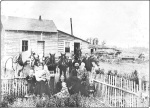 Homestead ou concessi
Homestead ou concessi
on de terre de ...
-
 L'inhumation du Père
L'inhumation du Père
Aulneau et de ... -
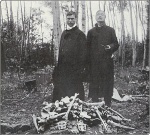 L’abbé Arthur Béliv
L’abbé Arthur Béliv
eau et le juge ... -
 Le costume officiel d
Le costume officiel d
u club de raque... -
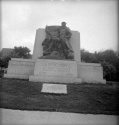 Le monument de La Vé
Le monument de La Vé
rendrye à Sain...
-
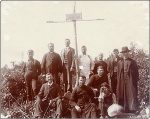 Les membres de l’expe
Les membres de l’expe
́dition de rech... -
 Les ossements du Pèr
Les ossements du Pèr
e Aulneau et de... -
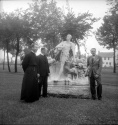 Les révérends Père
Les révérends Père
s Labarre et Gu... -
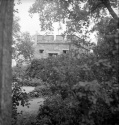 Les vieilles portes d
Les vieilles portes d
u fort françai...
-
 Maison de Louis Riel
Maison de Louis Riel
-
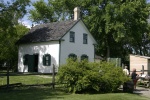 Maison de Louis Riel
Maison de Louis Riel
-
 Mgr Adélard Langevin
Mgr Adélard Langevin
, deuxième arc... -
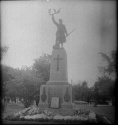 Monument élevé aux
Monument élevé aux
Français de l'...
-
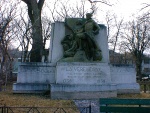 Monument La Vérendrye
Monument La Vérendrye
-
 Musée de Saint-Bonifa
Musée de Saint-Bonifa
ce, au Manitoba... -
 Objets retrouvés dan
Objets retrouvés dan
s le cercueil o... -
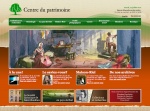 Page d'accueil de la
Page d'accueil de la
Société histori...
-
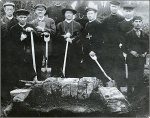 Photo prise lors d’un
Photo prise lors d’un
e des expéditi... -
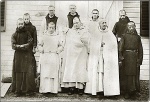 Photographie du premi
Photographie du premi
er groupe de Tr... -
 Portrait au fusain de
Portrait au fusain de
Louis Riel fil... -
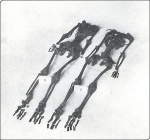 Squelettes, probablem
Squelettes, probablem
ent ceux de Jea...
-
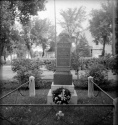 Tombe de Louis Riel d
Tombe de Louis Riel d
ans le vieux ci... -
 Un pèlerinage au lac
Un pèlerinage au lac
des Bois aprè... -
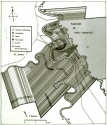 Une carte des lots de
Une carte des lots de
rivière à Sa... -
 Une lettre du Sieur d
Une lettre du Sieur d
e La Vérendrye...

